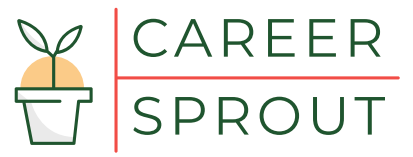In today’s newsletter we’re going to cover:
- 3 interview mistakes most people make
- 4-part interview framework to get more offers
- What Super Mario can teach you about your job search

3 Interview Mistakes Most People Make:
My team and I have helped clients prep for 5000+ interviews (and counting).
Who consistently makes it to the offer stage?
The people who avoid these 3 mistakes get offers:
- Only speaking about their own backgrounds (aka only answering questions)
- Excluding measurable outcomes (or value) in their responses
- Making their responses too generic or polished
How do they avoid these mistakes?
They use a 4-Part Framework for (almost) every question.

4-Part Interview Framework To Get More Offers
If you solve for problems, you’ll get more job offers.
The 4-Part Framework is designed to position you as a solution to a company’s problems vs. coming across as another person looking for another job.
Here’s what the 4 parts are:
1: Address the company’s needs
As a part of (almost) every response you provide, you should start by:
- Mentioning the research you did leading up the interview.
- Discussing the company’s initiatives and challenges
- Having an example about how you solved a similar problem in one of your past roles:
For example:
“Ahead of this interview, I had a chance to listen in on the company’s most recent earnings call. I also had a chance to speak to an internal employee as well as a few past employees and studied the 200+ customer reviews on Trust Pilot. It seems like the team’s biggest challenge is [X] followed by [Y].
At my previous company, I had the opportunity to work on a very similar challenge and I’d love to share how we worked through it and get your thoughts on it if you feel like that might be applicable here.”
2: Present a problem + the stakes at hand
For this, have a specific scenario you can walk them through + make sure that you mention what you/your team/your company stood to gain or lose.
- Would you have cost the company millions of dollars?
- Would a major client have left?
- Were you at risk of going severely over schedule?
- The more you can use real numbers/data, the more they’ll be engaged.
For example:
“3 years ago, when I was at Hulu, my team and I formed a partnership with a well known distributor, and the deal was valued at $24M. Our legal team accidentally overlooked a key aspect of the deal during the due-diligence process, and we didn’t catch it until right before we launched. The problem was we couldn’t delay the launch because marketing, and communications had already pushed it out months in advance and the launch was set to bring in over 5.5M viewers and we had already secured over $13.5M in ad deals.”
See how much tension an example like this could create? You’ll keep your audience (aka the interviewer) hooked.
3: Showcase how you solved that problem
Once you’ve set the stage, now you get to talk about how you solved x.
- The key here is to express humility (it’s sort of tricky).
- The best way to come across like a superhero without coming across arrogant is to talk about it from a Justice League standpoint vs. Super Man standpoint.
- Meaning, make sure you demonstrate that it was a team effort.
- As you talk them through how you solved this problem, you are calling out qualifications/skills that are required to this specific role
For example:
“Since there was virtually no way to rectify the situation prior to the launch, what I did was set up a cross-functional meeting with our legal team as well as the distributor’s legal team, too. We were trying to solve for how we capture 3rd party data and where to store it without violating privacy laws.
While both teams understood the legal implications, we decided to capture the data in a 3rd party tool and this tool almost served as escrow, which meant neither side could access this data until a resolution was found. This was the best thing we could do at the time. It was something that my team and I came up with and proposed during this all-hands meeting (which went on until 3 a.m. btw – it was crazy).”
4: Share the win
Now you hit them with the win that came from solving this problem.
The good news is, you don’t have to ONLY talk about one win. You can talk about how this win led to subsequent wins.
For example:
“I’m so proud of the collaboration we had during this process. As a result of it, we first and foremost strengthened our relationship with this distributor because they saw that we cared more about the privacy of our viewers and protecting all parties from lawsuits rather than trying to make an extra buck.
This allowed us to create more partnerships with this distributor, but they also told other distributors about the work that we did and that led us to securing additional partnerships that netted our team an additional $171M in new partnership deals + $53M in additional ad deals.”
Why this framework works
- Positions you as a solution to their problems vs. someone looking for a job
- Shows that you have a deep understanding of the skills required for this role
- Demonstrates that you’ve solved real problems (vs. theoretically knowing how you would solve real problems)
Try this out in your next interview and let me know how it goes!
What Super Mario Teaches Us About The Job Search
This 1 picture can teach us 5 valuable things about the job search:

1: It means that things didn’t work out (this time).
2. You’re going to have many more shots at it.
3. It’s going to get a little easier each time.
4. You’re going to level up very soon.
5. Maybe take a break. It’s not going anywhere
I hope you enjoyed this weekend’s newsletter, and that it serves you this week!
Gaurav
Whenever you're ready, there are 4 ways we can help:
1. CareerSprout Coaching Our coaching is designed to help tech professionals land $200k to $500k+ job offers that align with their values and life goals.
2. Free Coaching Calls Join us live on LinkedIn every Wednesday at 10am PT / 1pm ET to ask questions live and get actionable insights to land a job in today's market and build a meaningful career.
3. Weekly Newsletter Get resources with actionable insights delivered to your inbox each week to help you navigate personal and professional growth in today's world.
4. Partner with CareerSprout Want Gaurav or Katie to speak at your next event or host a virtual workshop? We'll create a workshop with actionable advice and strategies for job seekers in your community.
